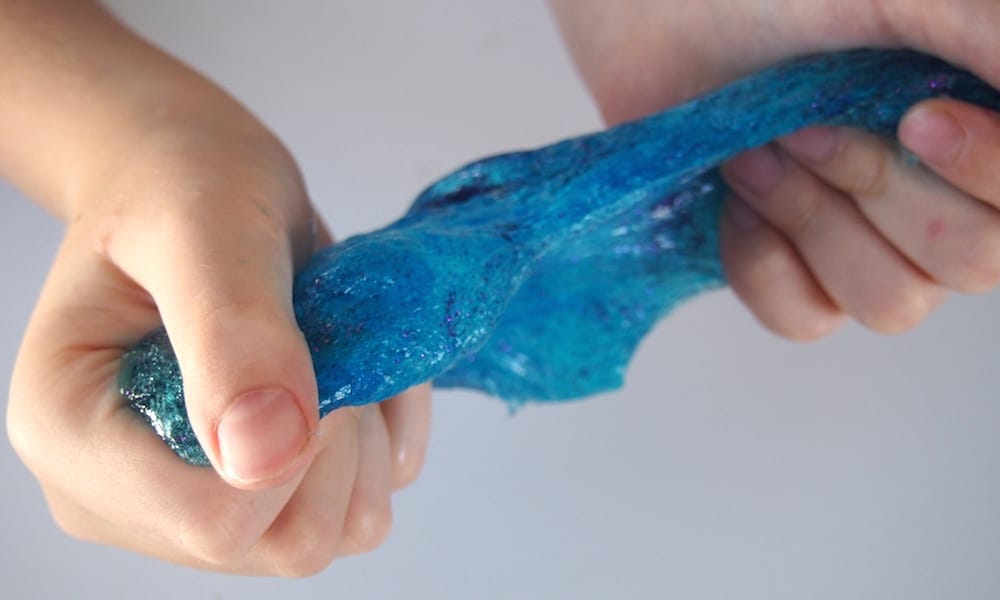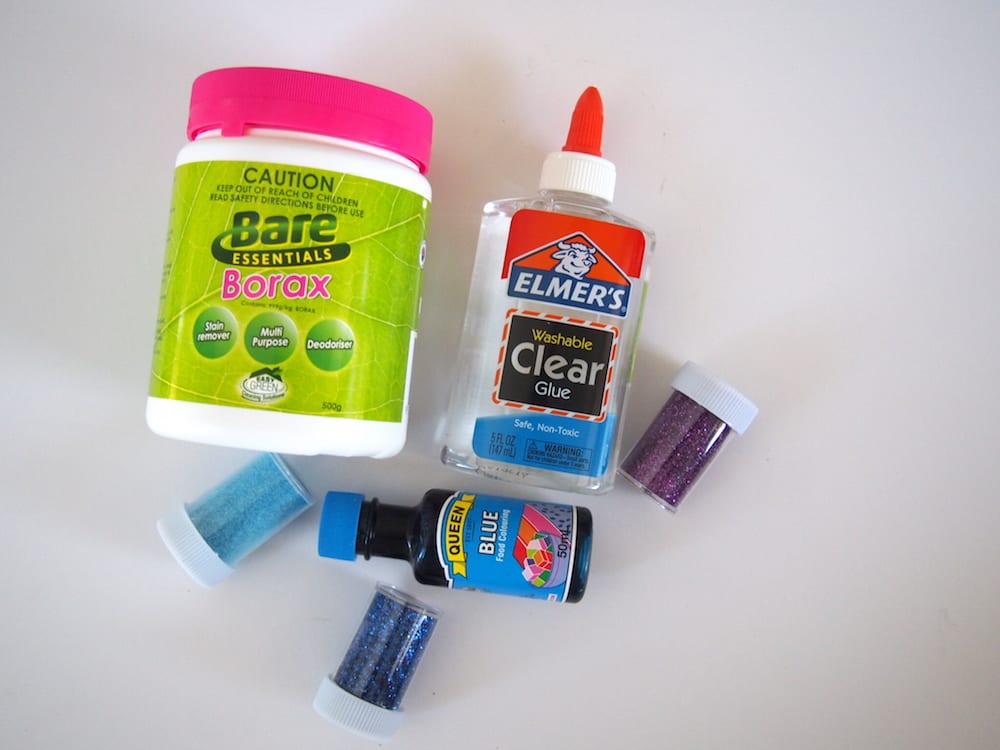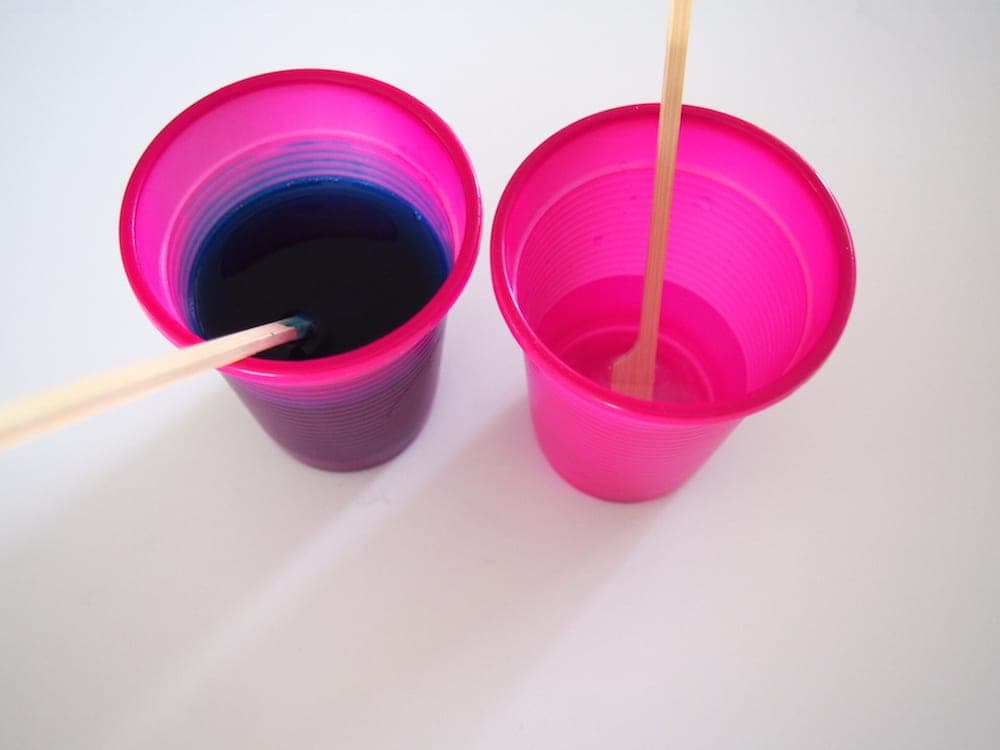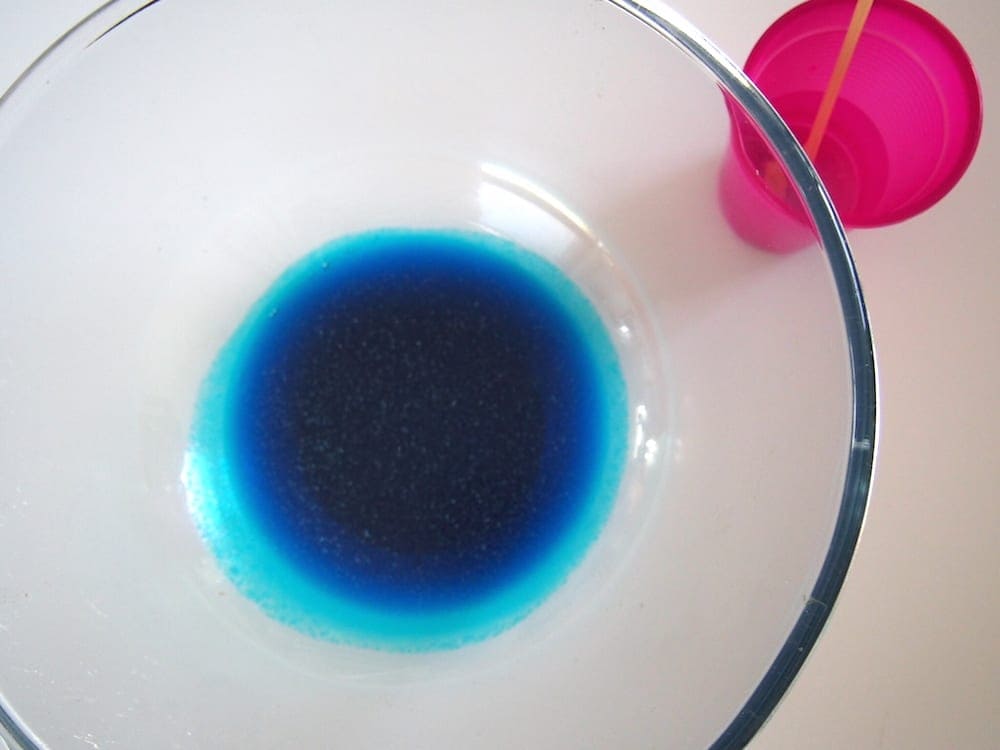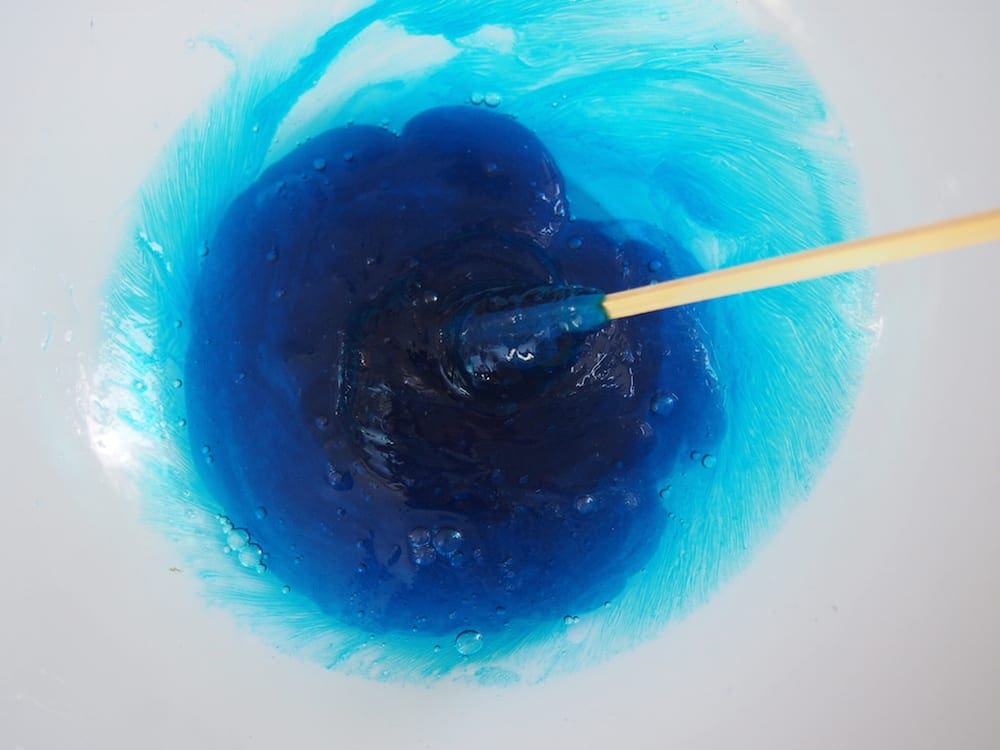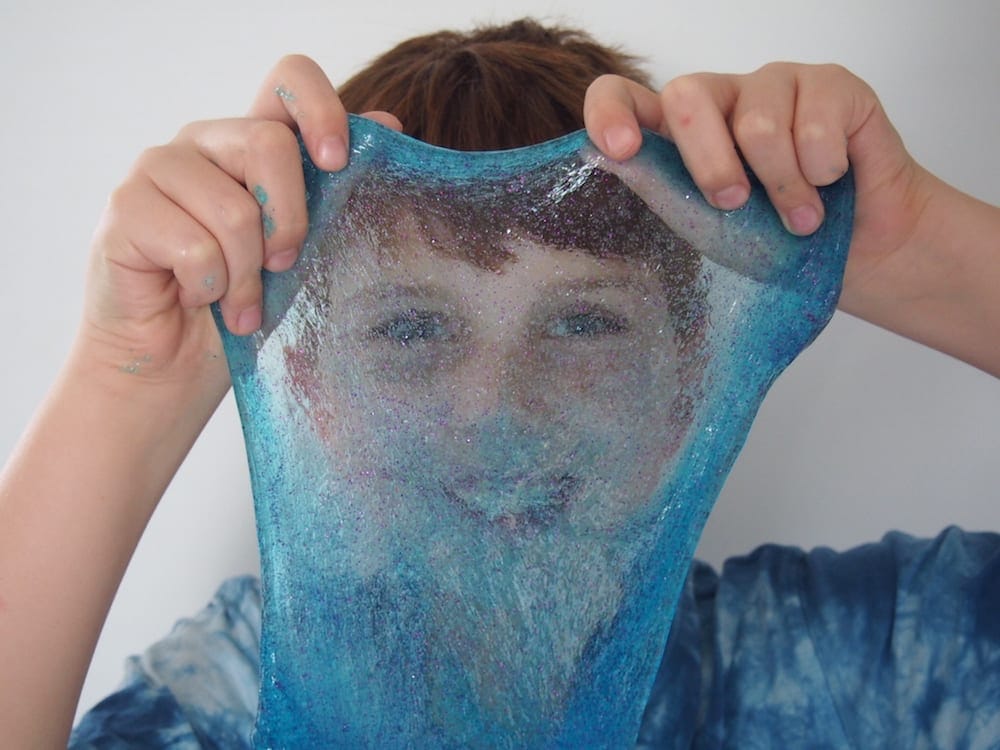Heads up: This glitter slime recipe uses Borax. If yourself or your child has sensitive skin, this recipe is not the right one for you. It also involves glitter, so now is your chance to run for the hills, because #craftnightmare
If you, like me have suffered through a bunch of failed slime and putty recipes, then you like me, have probably been getting the ingredients wrong.
You see, the glue has to be right, if it’s the wrong kind of PVC glue your goo will be a flop … and not the good kind. More slop, than flop if you know what I mean.
What worked for us, was finding Elmer’s Glue here in Australia. Next minute …
We’ve been slimed …
What will you need to make glitter slime at home?
The ‘mixing stuff’:
- Disposable cups for mixing
- Disposable BBQ skewers or Paddle Pop sticks for mixing
- Large glass bowl for bringing it all together
- Measuring cups
- Measuring spoons
- *Large disposable table cloth for making clean up easy *optional
- *Syringe dropper *optional
The ‘slime stuff’:
- 1/4 cup clear PVC school glue (go for the Elmer’s, it works)
- Water
- 1/4 teaspoon Borax
- Glitter (don’t hate the player, hate the game)
- Liquid food colouring
Elmer’s and Borax both proved a challenge to find when I went into stores, but when I took the search online I had much more luck.
I found Elmer’s at Spotlight online, and Borax at Coles online in the laundry section.
Also, look … you can leave the glitter out, I know it’s annoying. But you’ll have to live with the knowledge that you made boring slime for the rest of your life. Can you do that? Can you?
Time to get slimey
Now you have your mini laboratory ready to go, it’s time to get your putty on and make some slime. (Psst… If you’re feeling extra science-y after this, check out this HUGE list of science experiments you can do in the home with your own crew of little mad scientists!)
Here’s how:
- In one cup mix your glue with 45ml water (here’s where your old syringe medicine dropper will come in handy. I used the 10ml one to measure this out correctly). This is also when to add in a drop or two of your food colouring.
- In a separate cup add your Borax to 1/4 cup of water and mix well, until the Borax is completely dissolved.
- Now the kids can help. Get them to add the glue mix to your large mixing bowl. This is a great time to chuck in a *sploosh (*technical term) of glitter. Give it a mix, then …
- Slowly add your Borax mix to the bowl, it will immediately begin to react with glue mix and come together. Mix well for 30 seconds or so, before getting your hands into the mix.
- Let the kids work the mixture in their little paws and the games can begin!
Tips:
Slime is fun, but it’s also a pain. You’ll need to set some boundaries with your kids (and possibly adult partner) about the slime rules.
- Never EVER let them take it on anywhere carpeted. Never. Never ever.
- Never EVER let them put in in anyone’s hair. Never. Never ever
- Name the use-by date. I usually give my kids 12 hours and then it’s time for the slime to go to the *slime farm where a generous slime farmer will let it outlive it’s day in silly putty heaven. *bin
- Borax is not that nice, make sure they wash their hands thoroughly after every slime session.
- Lock any leftover glitter away on the asap. Possibly send it to the slime farm IFKWIM
- Have fun and bask in the glory of being a craft parent (but only for 12 hours, remember? #byebyeslime)
If your child enjoyed making slime, why not try something edible – kids will love making these popping pearls for iced tea!

